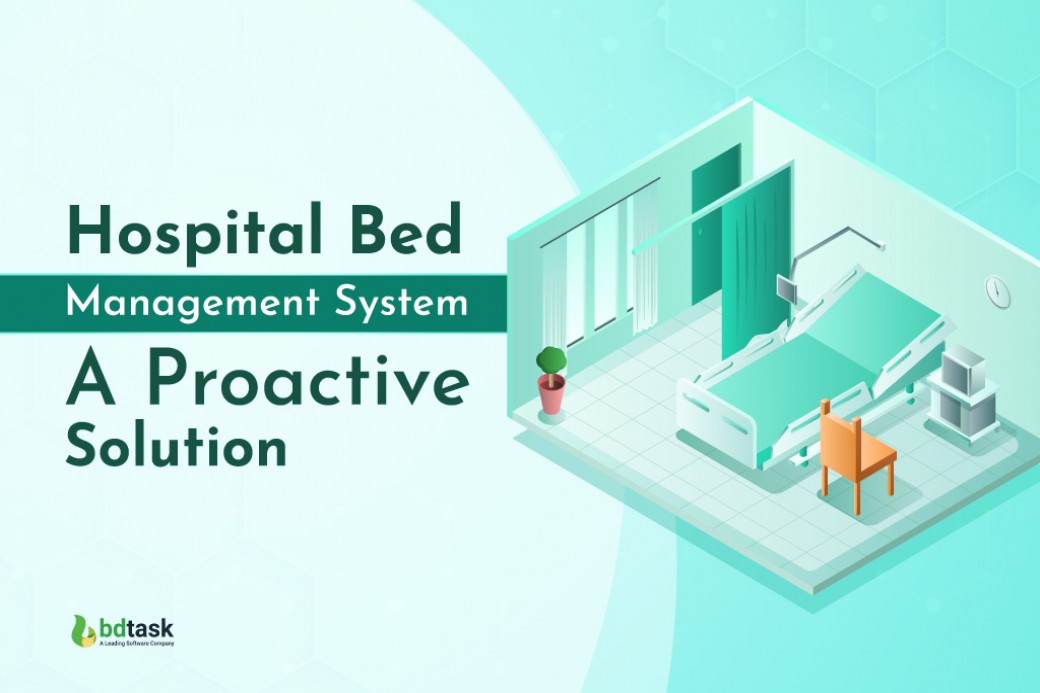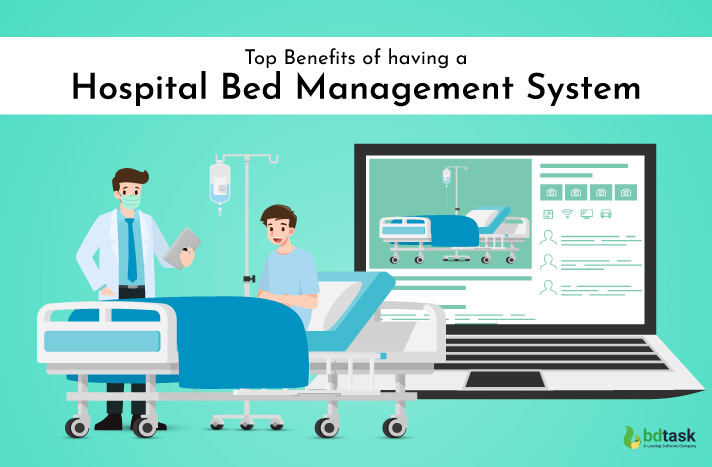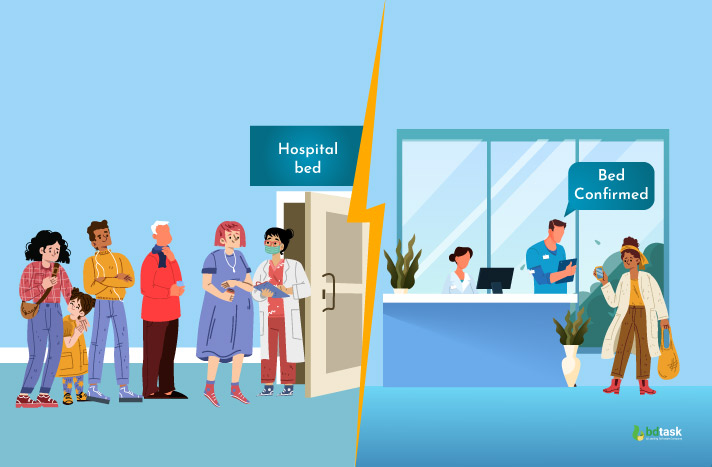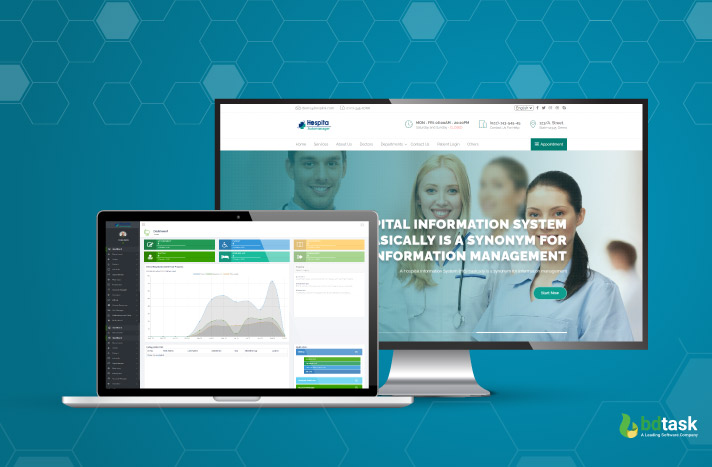Hospital Bed Management System - A Proactive Solution

A hospital bed management system creates a better, safer atmosphere for patients and a more efficient working environment for staff.
Bed management is one of the biggest challenges in the healthcare industry.
When Hospital Bed Management System is integrated, departments communicate effectively, team members are engaged, and goals are aligned. In addition, it creates more visibility and collaboration within the hospital.
As a result, it will help you to free up time for nurses to care, reduce stress on caregivers and improve patient outcomes.
Alternatively, Unplanned inventory, the incapacity of beds, and other insufficient resources may lead to poor operations, affecting the hospital's goodwill.
What can you do to run your hospital more smoothly? How can you ensure a high level of care for your patients?
What is the hospital bed management system, and how can it streamline your operation?
TO FIND OUT
Keep reading!
Bed Management - Is It A Simple, Straightforward Task?
Bed management is not one day task. Continuously maintaining and monitoring admission, discharge, and patient flow within the hospital so that accurate data is gathered. You can say that to get real-time status of all the available beds and maintain them.
However, Bed management is a big word to explain. What do you think?
Just think of it, you are a bed manager in one of the largest hospitals in the UK. The hospital has 950 beds, so imagine how hard it is to coordinate the patient movements in such a big hospital.
Blow your minds. Right?
In that process, the Bed Managers are vital workers. Now come to the main point. Let's give you a simple breakdown of a day of a bed manager
- At 7.30 am arrive at the hospital and check on the staffing, the acuity, and the planned discharges for the day.
- Round and referrals.
- Discharge duty.
- Around 5 pm it's time to fight (you need 12 hands men to answer the bleeps and the phone calls).
- If the discharges get failed, the transport doesn't arrive.
All those tasks you have to complete in a single day, and the routine goes on and goes on.
The Challenge that Impacts A Hospital's Rating And Revenue
The current manual approach to bed management and patient flow is completely inefficient – It is difficult to accept that teams of hospital staff rely on
- Making multiple phone calls.
- Frequent meetings.
- Maintaining spreadsheets.
Physically handling from ward to ward and building to building to check on the bed status, and by the moment the member of staff has returned to update the bed estate, the bed has likely been transferred to another patient.
Yet that is the stark truth.
Bed management is a hospital-wide issue.
A patient comes to the hospital to find the best services for their health, but unfortunately, poor bed management makes patients feel that their care is unsafe, of poor quality, and uncoordinated.
The lack of real-time data analysis provides a disadvantage resulting in patient overcrowding and malefactions in inpatient bed management services during emergencies.
Here is a look at some of the critical challenges that negatively impact a hospital's management
1. Poor Bed Facilities

Every hospital's key challenge is continuous "crisis management" of our inpatient capability.
When patients reach the hospital, the goal is to find a bed in a care unit as quickly as possible. If you have no idea about your hospital bed visibility, you are at risk, brother. Inefficient and ineffective bed management behavior may lead to a complete mess. You will be shocked to know that around early $5 million in missing medical equipment, including beds.
2. Bed Shortages And Real-Time Visibility Issues
Bed shortages are constantly reported, widely understood, and all too regularly experienced by those requiring even the most urgent care. Patients are always denied health care due to the shortages of hospital beds.
But when a hospital bed breaks down, the results are exceptionally costly because a patient's room remains unoccupied until the bed is fixed or replaced. That also causes a bed shortage issue.
Another severe problem is visibility issues in every hospital. When hospitals have a broken workflow, patient care is often affected. This condition outcome in frustrated staff and unhappy – or possibly endangered – patients.
Some key issues are
- Sometimes sufficient equipment is not available during the working period.
- Without real-time visibility, hospitals will often rely on anecdotal feedback from staff when making equipment purchasing decisions. Then occurs, unwanted expenses.
- Unavailable require equipment.
- When hospitals don't know where and how equipment has been used, they don't have control over it then they force to use dirty equipment over and over.
3. Fail to Meet Revenue Goals
Poor patient services lead to cancel surgeries.
Hospitals cannot develop services or invest in new technology when they fail to fulfill revenue goals. To gain extra revenue, you must first fulfill all the requirements that a regular patient needs. Without a hospital management system, it is impossible to fulfill the requirement.
In the above, we discuss all the major problems, but still, the hospital faces some issues that we should add to this list
- Patients end up Waiting too long for treatment.
- being treated in less safe equipment.
- sometimes, patients shift to another hospital for a lack of hospital facilities.
- Unnecessary patient safety issues.
- Eventual bed assignments in a nursing unit may not specialize in the patient’s illness or condition.
- Negative revenue impact owing to poor resource and facility utilization.
To solve these problems, you must have automation software to help you meet your needs adequately and make the business process dynamic.
It will help you to maintain the workflow of the hospital. Improve the overall performance and enhance the error-free working process.
Top Benefits of having a hospital bed management system

Better bed management has been shown to save as much as $370,000 per month per hospital.
If a patient in the wrong bed has to extend their stay, this costs $1,600 per day. If just 10% of patients are positioned in the wrong beds, that costs $9,800 daily. So you have to make sure that everything is under control.
A Hospital Automanager
is a ladder for your hospital's growth.
Hospital management software is a combined package that includes(a bed management system, an online appointment system, a report management system, and cloud-based technology, many more modules for managing any hospital’s activities properly.
Creates separate interfaces for doctors, nurses, and patients for better output.
1. Improve patient throughput and help streamline patient flow
Patient throughput can pose an actual challenge. Many healthcare providers see ineffective flow slowing them down and making a frustrating experience for patients.
With an efficient patient workflow, health care staff members experience slight stress and improved job satisfaction, directing to better job performance.
Hospitals, in turn, save money because they no longer need to boost the facility, add staff or deal with costly delays in care to accommodate more patients.
Using a hospital bed management system, hospitals and patients can expect the following benefits
- Improve patient care.
- Reduce the cost of health care facilities.
- Improved staff satisfaction.
- Increase productivity.
- Better return on assets.
2. Time to End The Waiting Game
No matter what the business sector, no customer likes to wait

And when it comes to the hospital sector, you don't know how pathetic the waiting time is.
Patient wait times may seem like a small part of the patient experience, but they can substantially affect overall patient satisfaction.
By automating hospital bed management systems and bed visibility, clinical staff can no longer depend on outdated information or error-prone manual notes.
Here are the top tips we found to boost your practice's productivity and how to lower/improve waiting time in hospitals.
- Collect patient information before their scheduled appointment.
- Set a time limit for late arrivals(If a patient is more than 30 minutes late, let them know you'll need to reschedule).
- IncreaseTransparency(lack of communication, ignorant para-medics, lack of patient safety, lack of transparency, and low-quality service).
- Observe your clinical process and see the areas that try to fix the problem.
3. Quickly Locate Needed Beds
Due to the physical size of most hospitals, it is usually difficult to establish precisely where beds are.
Tracking the location of beds, patient trolleys, and cots with hospital management software technology improves availability, efficiency, and utilization. It also shortens the time the staff spends looking for a specific bed.
The reason why you track down your hospital beds
- It can help identify bottlenecks where beds have been waiting too long for repairs.
- Improves the up-time of beds, increases availability, and often avoids hiring additional beds to cope with demand, which helps reduce costs.
- If any bed is reported as faulty, it’s easier to identify and replace it to avoid failure while it’s in use.
- In case of an infection outbreak, see where a particular bed is. It is helpful for the infection control team, so it can quickly isolate and decontaminate before further spread occurs.
Invest in a hospital bed management system if you struggle with monitoring your bed visibility, cash flow, or resources.
4. Reduce Unnecessary Cost
What can healthcare do to reduce costs?
The answer to the problem is simple – innovative solutions.
A hospital bed management system that controls operating expenses has a greater chance of success than others that don't.
Another way to reduce unnecessary costs is standardization. It is a massive opportunity for organizations focused on cost reduction in healthcare.
A bed management system helps reduce unnecessary costs and improve patients' life support experience. As a result, it will lead you to make some revenue for your hospital. Giving top-notch services to your patients shows the path to Reducing the number of canceled surgeries by enhancing bed tracking and visibility can save a large hospital millions of dollars.
The number of delayed and canceled surgeries at The University of Rochester Medical Center (URMC) was estimated to be 7,500 annually, resulting in an evaluated loss of $5.9 million. Many of these dollars are piped back into the hospital budget by implementing a hospital bed management system.
5. Streamlined Bed Maintenance(Stay up to Date)
The bed is an integral part of the patient care experience.
Hospital beds are being used 24 hours a day, 365 days a year, so they must be in top shape for the patient’s and the carer’s peace of mind.
Bed maintenance is also maintained from time to time for better outcomes. It should be performed once a year or middle of the year. Since beds and wheelchairs often travel throughout the hospital, all departments must work together to:-
- Determine critical problems with the devices.
- Report problems.
- Find ways to control track.
A hospital bed management system monitors all those things pretty quickly. In addition, the bed management system gives you a notification of when you should upgrade.
6. Thanks to Technology

Technology can be one of the best tools a hospital can use to improve revenue cycle performance.
Healthcare professionals can use hospital billing systems, bed management systems, or fully customized hospital auto-manager software to collect and analyze data, online patient portals, location devices, and many more facilities.
Those tools provide helpful insights so managers can make decisions that sweeten patient care, support staff, and improve overall efficiency. Managers can also use data to show staff members how their work impacts the hospital.
In addition, as more tasks become automated in health care settings, it's becoming easier to track patient workflow and identify potential bottlenecks.
The software helps lower emergency department boarding times, expedite inpatient entries, reduce the length of stay, and, ultimately, lower the cost of care.
7. Clinical Staff Efficiency Faster Than Ever
Proper scheduling can significantly affect practice efficiency for the patient and the physician. However, getting appointment bookings right can be a daunting task, significantly when you are scaling up your practice to take on more patients.
These strategies can help you increase clinical efficiency.
- Hospital bed system record all the patient data so that clinical staff do not need to collect all the data manually and spend their time with other staff.
- Train staff for more productive performances.
- Good team communication is vital for clinical staff efficiency.
Following this step, patients can complete their treatment faster and with a higher level of satisfaction.
Purpose of Use Hospital Auto Manager
Real-time management solutions such as Hospital Automanager Can assist you in overcoming some of the most significant challenges facing today's hospitals.
- To serve easy healthcare service.
- To enhance working efficiency.
- For a better management system.
- To improve patient care.
- To reduce the process cost.
- overall and improve financial & operational activities.
So please don't waste your time trying our hospital management software and enjoy the rest of the time.
Finish Line
Bed management software is a superb way to simplify the operation of every healthcare institution. Doing all the work without software is possible, but it will be a slow journey with several issues.
If you are under a lot of work stress, the most helpful way to eradicate this issue is by bringing in expert healthcare software that efficiently takes care of your clinical processes.










